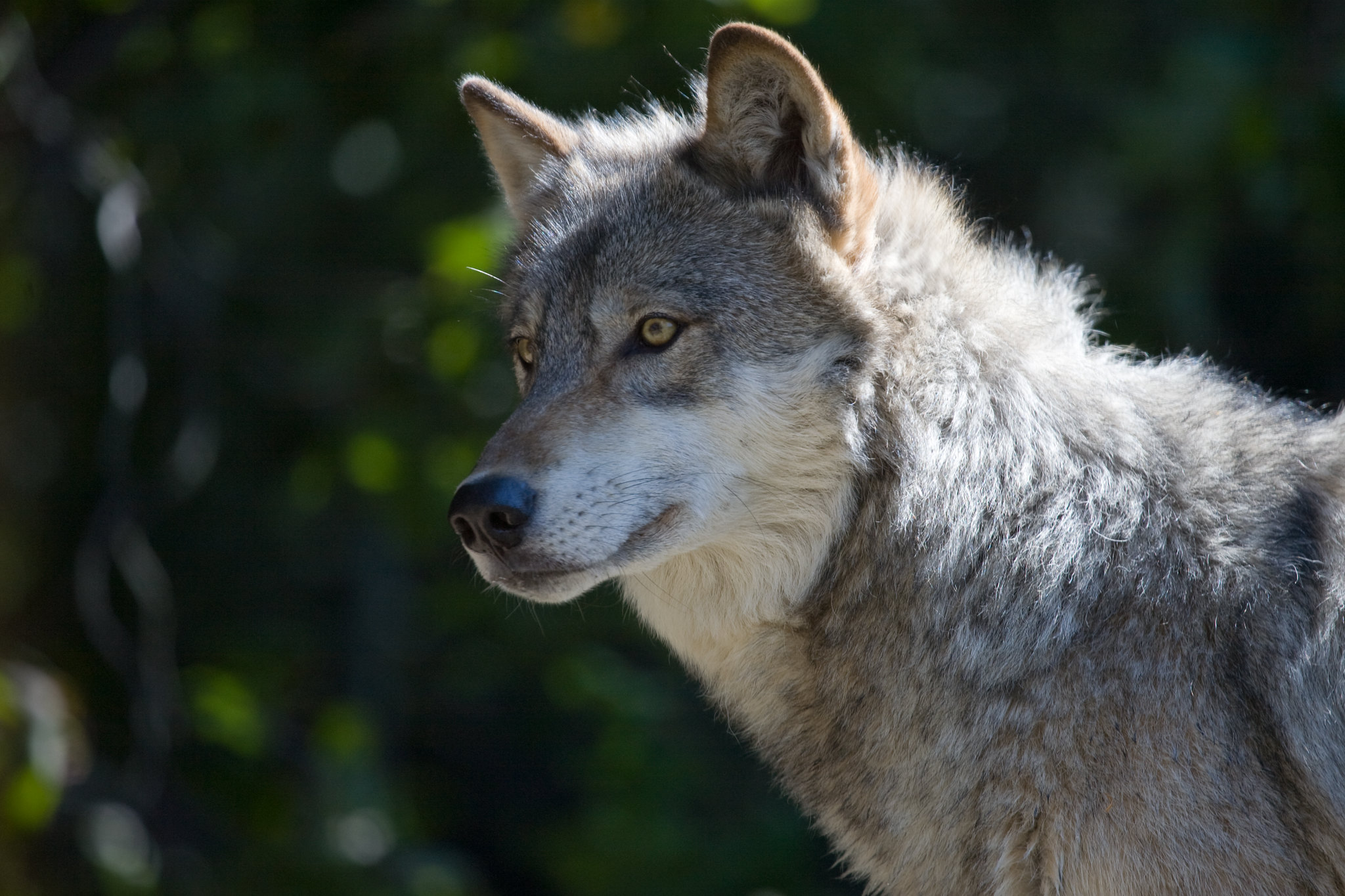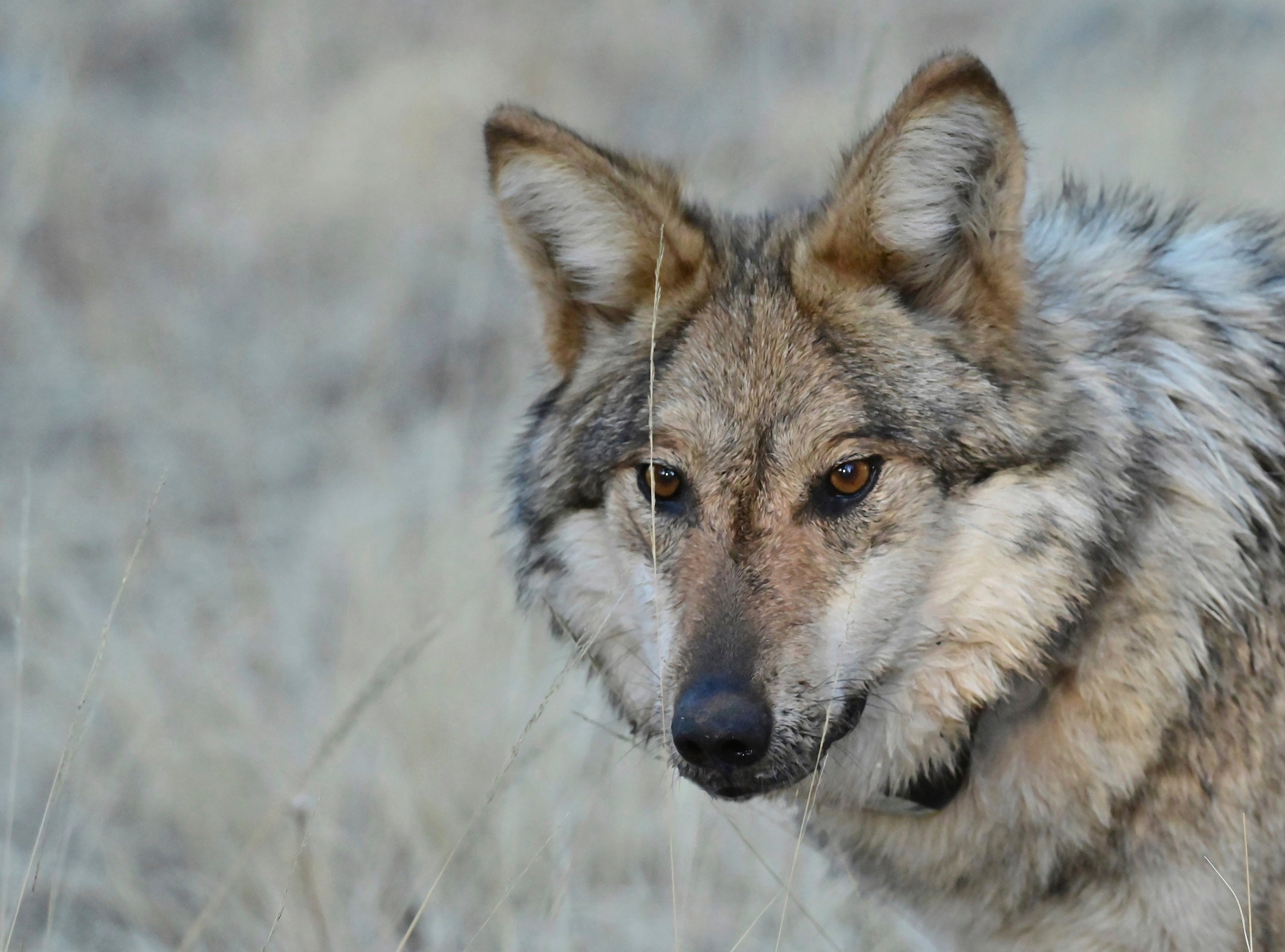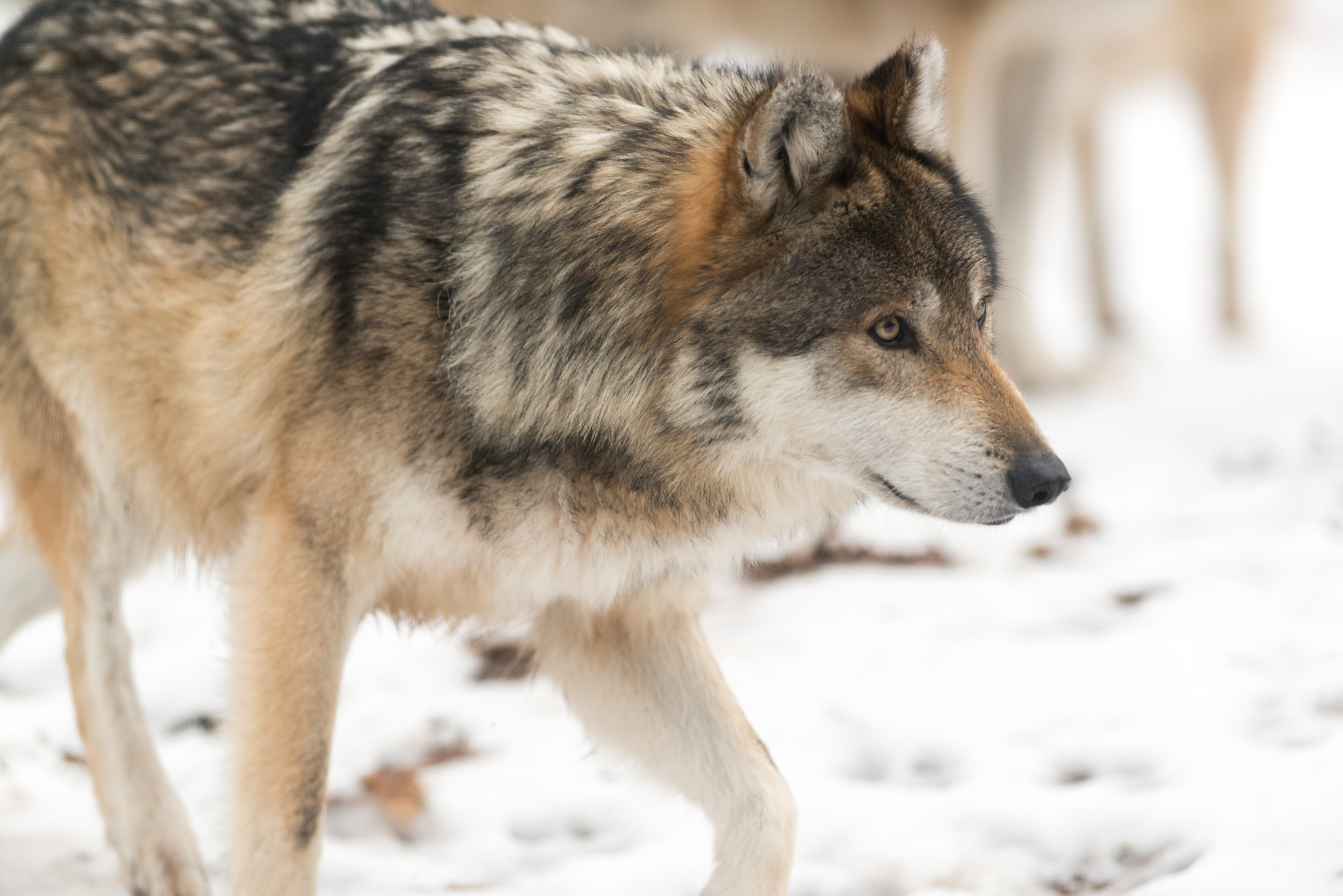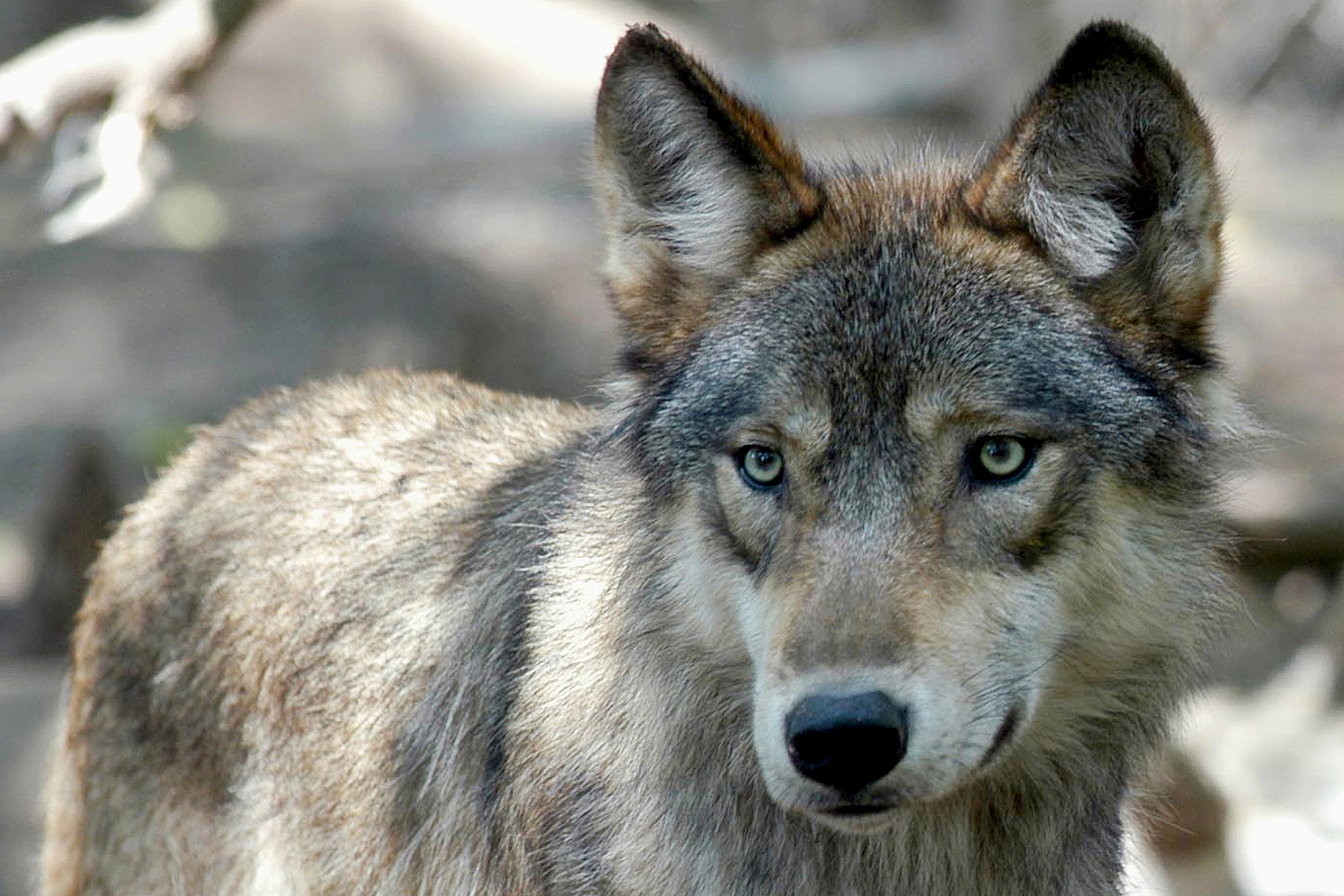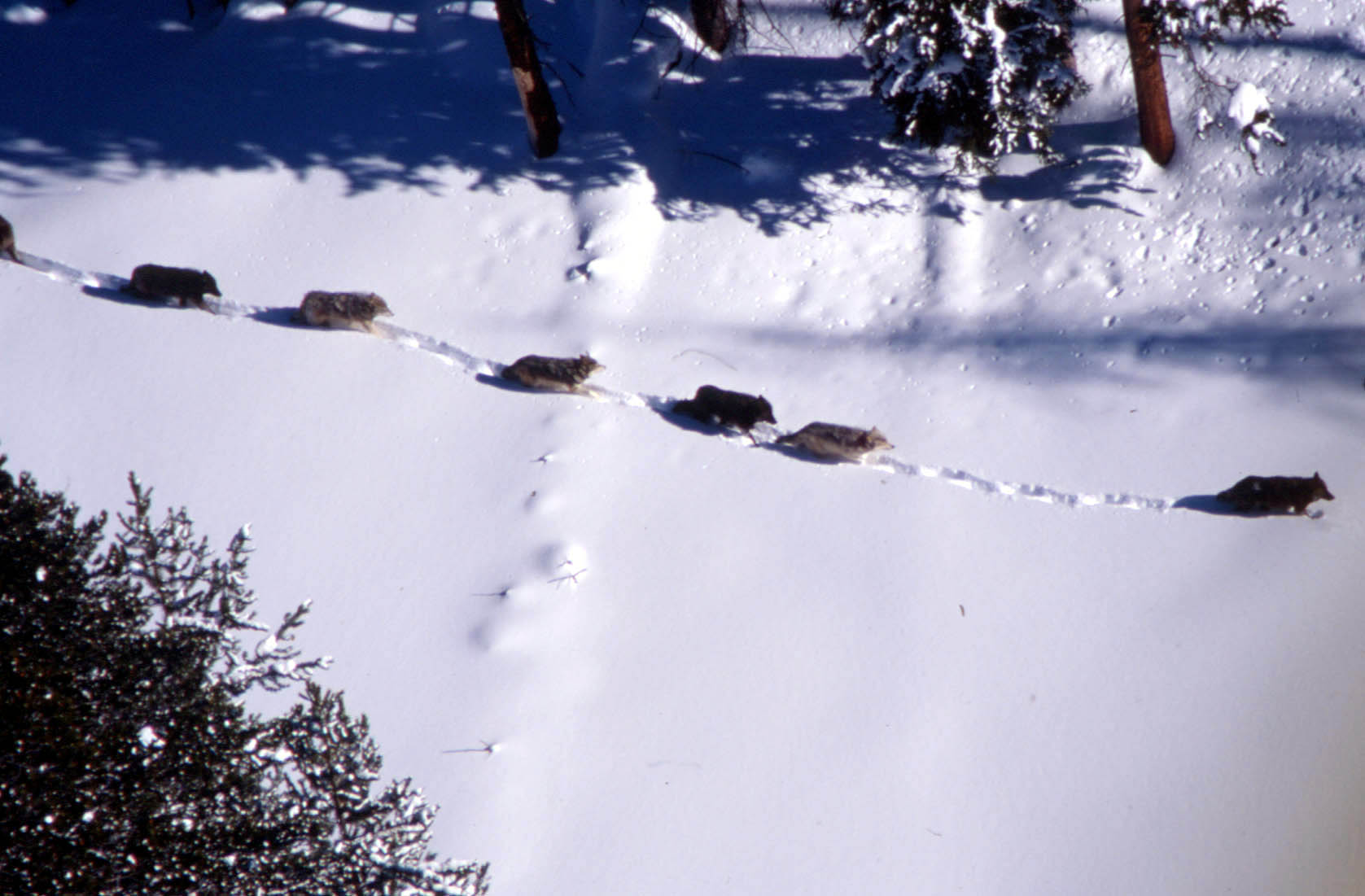A revised draft of the state’s wolf management plan unveiled Tuesday doesn’t set a statewide population goal for wolves, disappointing GOP lawmakers and hunters who have pushed for a target to manage their numbers.
Instead, the Department of Natural Resources seeks to guide state management of wolves that would maintain the population at levels between 800 and 1,200 wolves as seen in recent years.
DNR Large Carnivore Specialist Randy Johnson said some of the issues with a statewide population goal is that wolf numbers can change through time. He said a statewide goal would also fail to address how wolves are spread out on the landscape.
News with a little more humanity
WPR’s “Wisconsin Today” newsletter keeps you connected to the state you love without feeling overwhelmed. No paywall. No agenda. No corporate filter.
“It’s hard to predict the future, but I think this plan is flexible and adaptable in that way to make sure it continues to reflect the science but also the public preferences as we go forward,” said Johnson.
The last plan approved in 1999 and updated in 2007 set a population goal of 350 wolves at a time when Wisconsin had roughly 250 wolves. Since then, DNR data from September shows the animal’s population has grown four times that number to nearly 1,000 wolves and appears to be stabilizing.
The existing plan and management goal were the subject of much debate before and after a winter wolf hunt held in February 2021. Following the wolf’s delisting that year, hunters killed 218 wolves in fewer than three days, consuming their share and Ojibwe tribes’ portion of a 200-wolf quota. A judge restored federal protections for the animal last year.
Hunters, farmers, and former conservative members of the state Natural Resources Board pointed to that goal as justification for higher wolf harvests to reduce their numbers, as well as conflicts with livestock and dogs. Mike Brust, legislative liaison for the Wisconsin Bowhunters Association, said he would like to see the Natural Resources Board reject the plan or adopt a reasonable goal.
“I don’t think that’s going to happen,” Brust said. “So then, I guess the next step is watch the legislators step in and do it for them, and that would be unfortunate.”
Tribes, wolf advocates and conservation groups have criticized the existing plan as vastly outdated and not grounded in science. They add the plan’s goal was never intended to be a cap on the state’s wolf population.
Melissa Smith of Friends of the Wisconsin Wolf and Wildlife said the group is still reviewing the plan, but she said the DNR’s range is an improvement from a goal of 350 wolves.
“It’s more scientific, but why does there need to be a number?” Smith said, adding she’s concerned about what the range means for wolf management zones.
Republican lawmakers also introduced a bill earlier this year that sought to set a statewide population goal for wolves. When asked by a reporter if the DNR anticipated conflicts from GOP lawmakers over its revised plan, Johnson said the agency will “cross that bridge when we come to it.”
“I think my job here is to write a plan that’s based in good science, and we’ll take it forward from there,” said Johnson.
Charlie Rasmussen, a spokesperson with the Great Lakes Indian Fish and Wildlife Commission, said Wisconsin tribes appreciate elements of the plan, such as no wolf harvests on reservations and buffer zones around them. Even so, he said in an email that wolves are capable of regulating their population across pack territories.
“Tribes would take issue that an upper limit to how many wolves were allowed to live in Wisconsin is necessary,” Rasmussen said.
The revised draft comes after the DNR extended the public comment period by more than 100 days and received around 3,500 comments on its draft.
“The public’s interest and passion towards wolves and wolf management showed in the comments the DNR received,” DNR Secretary Adam Payne said in a statement. “This plan comes from years of dedicated effort and careful consideration, is flexible, actionable, and, most importantly, outlines a path toward responsible and sustainable wolf management. I am thankful to everyone who contributed, reviewed the plan or submitted a comment.”
While wolves are currently under federal protection, Wisconsin law mandates a wolf hunt when the animal isn’t listed as endangered. Democratic U.S. Sen. Tammy Baldwin and Republican U.S. Rep. Tom Tiffany have introduced or co-sponsored bills this year to delist the wolf as an endangered species, but they vary in details.
The DNR’s revised plan continues to include six updated wolf management zones that would set harvest quotas to maintain, grow or decrease wolves within those zones when the wolf isn’t under federal protection. It does make a change to shift parts of Lincoln County into the boundary of another zone.
The plan also retains a proposal to reduce the time to register wolf kills from 24 hours to eight hours after harvest, as well as issue zone-specific tags. The DNR would also add ways to address local concerns that include harvesting wolves near tribes’ reservations and focusing hunts in areas with problem wolves.
Dog training to hunt wolves would also be allowed when wolf seasons are held in line with state law, and training would end in each zone as they’re closed to harvest.
It’s the first new wolf management plan in more than two decades. The Wisconsin Department of Natural Resources began crafting a new plan in 2013, but the draft was abandoned two years later following a federal judge’s ruling to restore protections for the animal in late 2014.
A 2022 survey by the DNR shows most Wisconsin households that responded support a population larger than 350 wolves, including in the wolf’s current range.
A report issued last month by conservation group Wisconsin’s Green Fire found wolf attacks on hunting dogs has fluctuated but not changed significantly. The group also found attacks on livestock have mostly declined as the population has grown except after the 2021 wolf hunt when 45 farms had livestock depredation by wolves, according to data from USDA-Wildlife Services. The figures show a tiny fraction of the state’s more than 64,000 farms have been affected by wolf depredations.
According to the DNR, the agency received 31 verified complaints of wolf depredations so far this year, affecting 18 producers. While those figures have fluctuated since 2019, the agency has seen fewer than 50 verified attacks each year that have affected even fewer farmers. Smith said a vocal minority is trying to reduce wolf numbers, but Brust argues that wolves can also have effects on livestock production where wolves are present.
The plan still requires approval from the Natural Resources Board, which will take up the plan in October. If passed, it would then go to the Legislature and governor for approval.
Wisconsin Public Radio, © Copyright 2025, Board of Regents of the University of Wisconsin System and Wisconsin Educational Communications Board.

